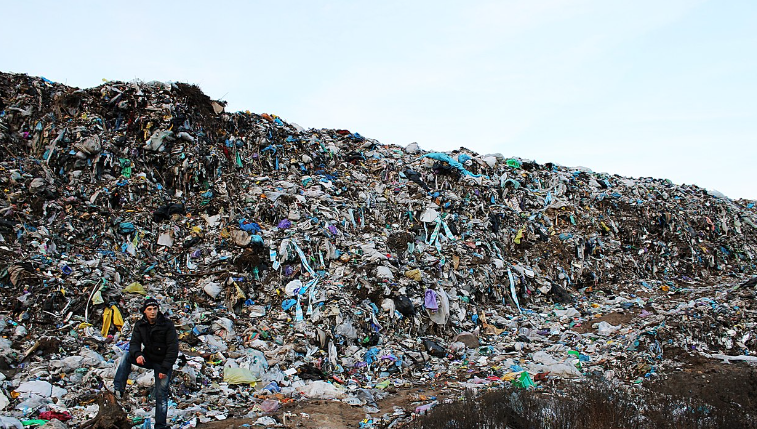I’m scrolling on social media trying to keep up with all the new fashion trends present in today’s society. My Shein cart is filled with various pieces of poorly made cheap clothing. My closet is overflowing with clothing made from fast fashion that I have barely even worn once. What’s the harm right? It’s inexpensive and cute. It can’t be that bad! Wrong. Fast fashion is a leading cause of climate change in today’s world. The overproduction from the fast fashion industry is causing landfills to overfill and pollution to skyrocket. Misinformation from the fast fashion industry prevents consumers from realizing their contributions to the unethical problems of the global climate change crisis. Is a four-dollar shirt still worth it when it comes to the expense of the planet’s health?
Fast fashion is the overproduction of poorly manufactured clothing made for quantity over quality. Overproduction of materials that are harmful to the environment such as “clothes that contain petroleum-based resource-intensive synthetic fibers such as polyester and nylon” take “centuries to decompose in landfills” and “are responsible for 35 percent of the microplastics contaminating our oceans,” according to Evelyn Wang from the New York Times. Additionally, according to Helle Greenpeace, with all this present plastic use and the energy to used produce the desired plastic-based clothing, “8-10% carbon dioxide of global carbon dioxide emissions (4-5 billion tonnes annually)” are released affecting our climate more than necessary. The dominance of online shopping in the fast fashion industry leads to an increase in the number of planes used to transfer these cheap materials, negatively impacting the environment. Consider a shirt traveling across the world, undergoing 17+ hours on a plane. Now, put that into perspective for a constant cycle of shipments of cheap fast fashion clothing taking airfare across the world multiple times a day. It all adds up to a large unnecessary amount of carbon dioxide being released into the air. Cheap plastic fabrics such as polyester, sold by fast fashion companies, are a growing issue because these poorly made clothing pieces don’t last long, causing them to get thrown out and end up rotting in landfills for a long period. Polyester fabric sits in a landfill for years before it breaks down mainly because it is made from plastics that are extremely hard to decompose. As long as fast fashion companies continue to remain trendy these issues will never be fully addressed without further education on the topic of climate change inspired by clothing manufacturing.
Fast fashion brands are designed for rapid consumption. They inspire this in their consumers by making sure their prices are easily affordable and designs are trendy. A consumer is tricked by the fast fashion industry by these cheap prices, which continues to consume large amounts of these cheap harmful products that are barely worn once. A lot of these consumers care about the environment but do not fully grasp the gravity to which fast fashion impacts climate change negatively. Lara Bloomberg says, “Although surveys show that young consumers do care about the environment, their shopping habits are dictated mostly by economics”, and this comes down to the fact that social media effortlessly pushes out trends with a lack of information. The misinformation disseminated by this industry prevents consumers from fully grasping their role in the unethical aspects of the global climate change crisis. Therefore it is always important to do research before consuming the trends of today. Fast fashion is a prime example of consumers being uninformed about the environmental effects fast fashion brings to the world’s ecosystem. Advertisements seen on social media platforms show the desirable side of fast fashion highlighting prices, deals, and ways to gain points which lead to money off on your next purchase. However, it conceals the drastic impact fast fashion clothing has on the environment. Specifically, Shein has garnered incredible support through social media platforms such as TikTok, Instagram, and others.
Shein is one of the biggest fast fashion corporations that gained traction from social media. Social media absorbed Shein as it pushed out low prices towards teenage consumers who usually don’t have high-paying jobs where they can afford properly made clothing and therefore resort towards fast fashion. These teenage groups often lack an understanding of how the fast fashion industry negatively impacts the global climate change crisis. Shein is a prime example of the overproduction of Polyester. To put into perspective how harmful the material polyester is, “a single polyester dress releases about 17 kilograms of carbon dioxide into the atmosphere”, according to Bloomberg. Shein is selling “hundreds of thousands- if not millions- of polyester dresses at a disposable price point every year”. These clothing pieces are not made to last more than a couple of dozen wears which causes the future of that garment to be centuries rotting in an overflowing landfill. However, it is not just the atmosphere that companies, including Shein, are affecting; they also impact the world’s oceans. Because “most of the clothes from Shein are made from synthetic fiber” it has caused the release of “plastic microfibers into oceans”, as said by Terry Nguyen Vox from Vox. It is not only Shein’s disregard for the environment but the controversy surrounding their employees’ working conditions. There is little evidence to support the TikTok rumors of Shein employing minors, providing an unhygienic working place, overworking their employees, having an unsafe workplace, or physically hurting their employees, but what is known is that Shein has cases of stealing or making “blatant rip-offs” of “several designers and artists” work, Shein “has yet to disclose information about it’s working conditions and supply chain to the British government, which the retailer is required to do under UK law“, and Shein has “preciously falsely stated on its website that its factories were certified by international labor standards bodies” is an extremely unethical company engaging in secretive and questionable practices that may eventually unfold into a larger narrative. Shein is dominating the fast fashion industry. With Shein’s presence on social media, it has gained an unreal amount of support to the point of “becoming the leading US shopping app” even passing Amazon. Without educating the public on the issues of fast fashion companies like Shein will continue to prosper in a world that is already dealing with the negative effects of global climate change.
The worldwide issue of fast fashion has led to other controversial issues present all over the globe. Since fast fashion consumption is so high, so is the amount of these fast fashion clothing pieces being thrown away. An issue occurring due to the disposing of plastic-based clothing is the “recent investigation reveal[ing]ed that Europe is dumping 37 million pieces of plastic clothing on Kenya.” Kenya is located in East Africa and has been negatively affected by the European powers since colonial imperialism which led to the dissecting of African resources such as Ivory resulting in the underpopulated elephant species and the African slave trade. In Kenya, the African people have termed the clothing imports ‘Mitumba,’ a Kiswahili term describing bundles or bales, as that is typically the form in which European clothing waste arrives. There has been no growth in Europe’s ethicality as they are still negatively affecting Africa. A “30-40% of mitumba imported to Kenya is of such bad quality that it cannot be sold anymore,” causing Kenya to have “to deal with 150-200 tonnes of fashion and textile waste per day.” Some of this clothing isn’t even used. Fast fashion companies overproduce to be able to rapidly ship out orders. Consequently, a substantial amount of clothing stacked up in warehouses ends up discarded before reaching the hands of consumers. Furthermore, the dumping of clothing waste is not just limited to Kenya but “some of this brand-new, unworn clothing ends up in places like Ghana” and the shores of various other African countries. While it would be acceptable if Europe were donating usable clothing to struggling African communities, the reality is that they are not. Instead, they are maliciously dumping unusable fabrics onto Africa to avoid the fabric buildup in their own country. The reason why there is so much build-up is because unlike other fabrics and waste these plastic-based materials cannot be disposed of with tactics like burning as burning these fabrics at such high volume is extremely toxic to the environment and jeopardizes the health of people and animals. Additionally plastic-based clothing like polyester is not recyclable. To protect the global ecosystem people need to stop contributing to fast fashion and resort to other ways to receive clothing.
Promoting awareness of the issue of fast fashion and its effects on the environment is one of the many ways to decline the skyrocketing business the fast fashion industry holds. Rather than buying from these fast fashion companies, individuals can explore alternative options like thrifting. Thrifting is a great way to reuse second-hand clothes and keep them out of landfills. Exploring thrift stores and online reselling websites such as Depop, Poshmark, and eBay can benefit the use of fabric around the world. Another great option is supporting upcycling. Upcycling is when a person uses various fabrics to create a new piece of clothing. Upcycling has gained more attention over the past few years. Exploring upcycling creators or even learning how to upcycle can help with the overpopulation of clothing. Instead of donating old clothing to places that already hold thousands of clothing like Goodwill and Savers, donate to charities, foster care programs, churches, and other places where the clothing is known to be used and worn by people in need. Most importantly, limit the amount of clothing you buy and ensure that the clothes you purchase are of good quality and made with safe materials. Be mindful of your choices when making purchases, considering their impact not just on your closet but also on our global responsibilities.









